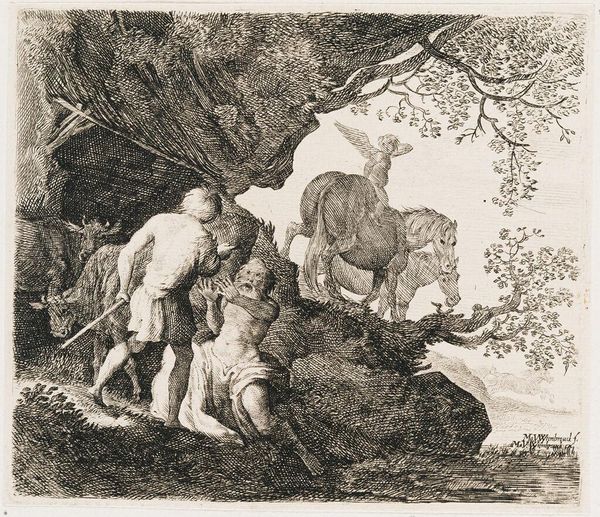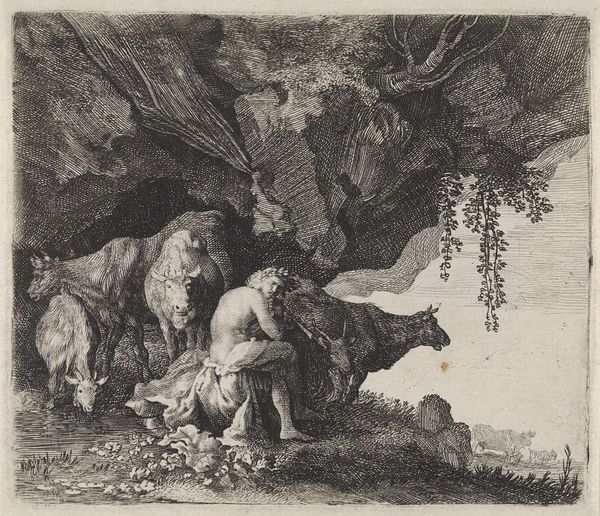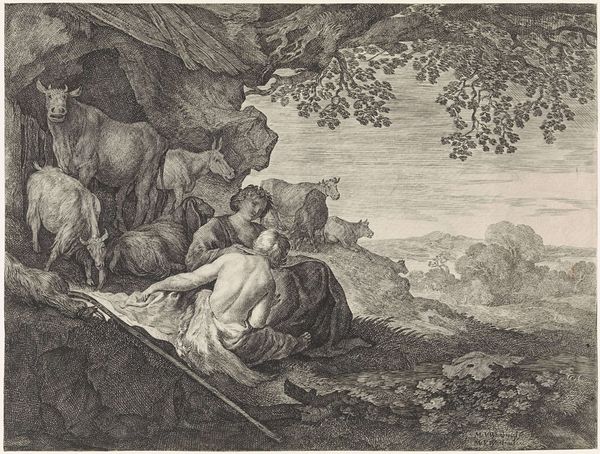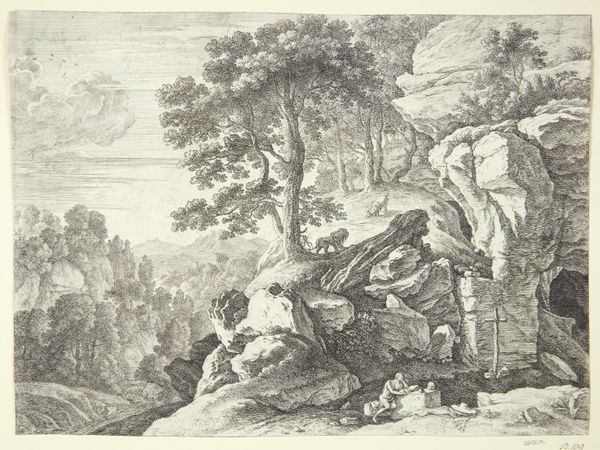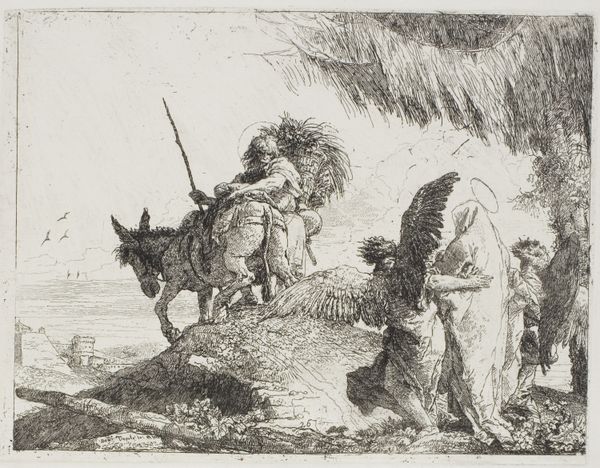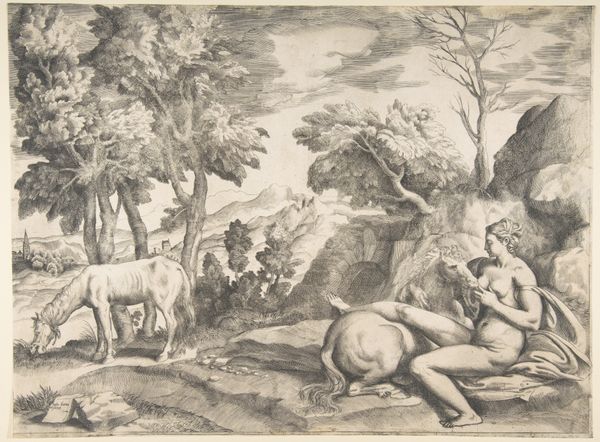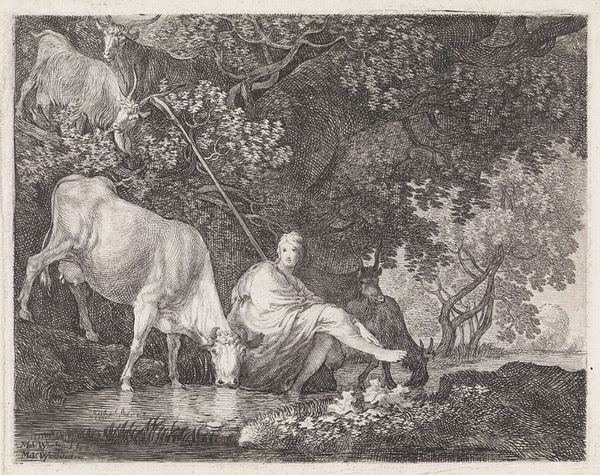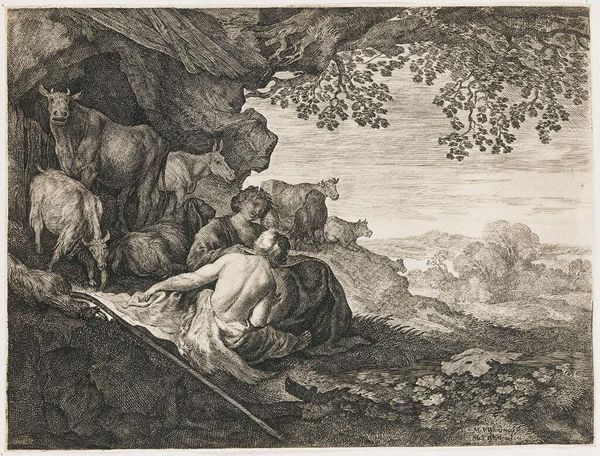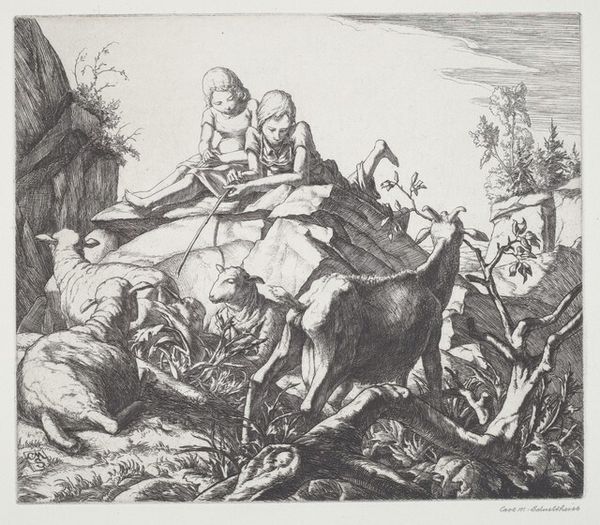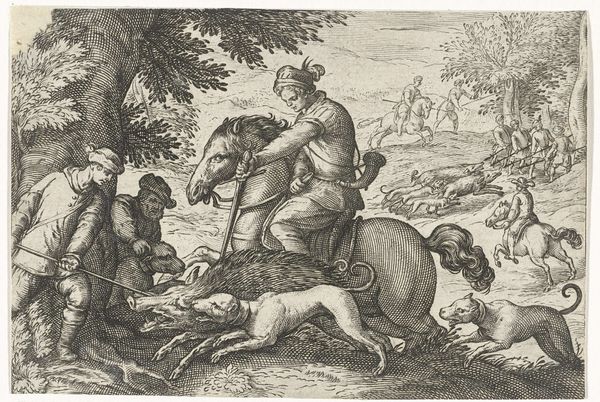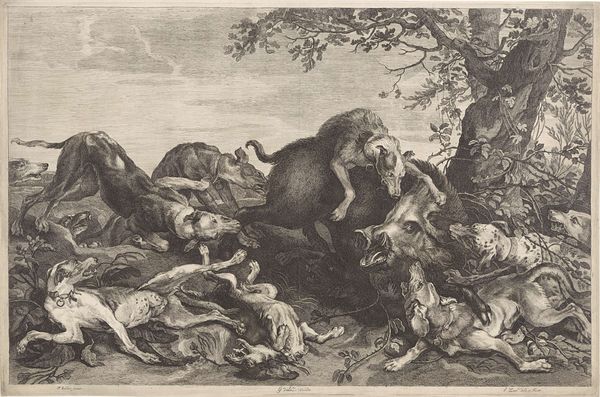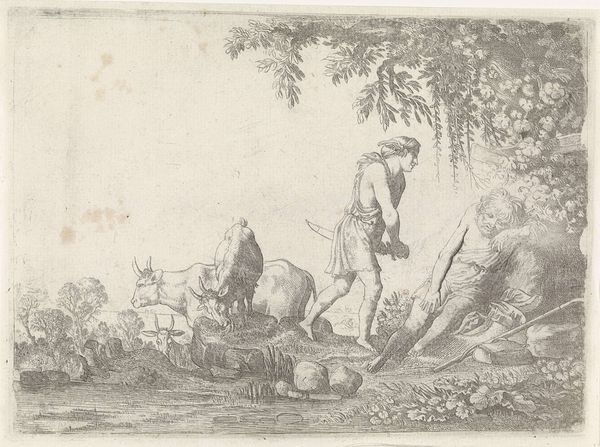
print, engraving
#
baroque
# print
#
old engraving style
#
figuration
#
pencil drawing
#
history-painting
#
engraving
Dimensions: height 127 mm, width 149 mm
Copyright: Rijks Museum: Open Domain
Moyses van Wtenbrouck made this print, Mercurius bestraft Battus, using etching, sometime in the first half of the 17th century. Etching is an indirect intaglio printmaking technique, where the image is incised on a metal plate using acid. The plate would first be covered with a waxy, acid-resistant ground. The artist then scratches off the ground with a pointed etching needle, exposing the metal. Finally, the plate is immersed in acid, which bites into the exposed metal, creating lines. The etched lines of Wtenbrouck’s print create a scene of dramatic intensity. The pastoral setting is meticulously rendered, and the artist uses the linear quality of etching to create tonal variations and textures. The contrast between light and shadow, achieved through dense and sparse line work, adds depth and volume to the figures. The act of etching itself, a laborious process of layering acid bites and controlled mark-making, emphasizes the level of skill required. Appreciating this process allows us to value not just the image, but also the labor and expertise involved in its creation, breaking down traditional distinctions between craft and fine art.
Comments
No comments
Be the first to comment and join the conversation on the ultimate creative platform.
